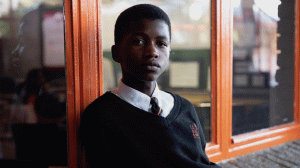While there has been progress on achieving gender equality over the past few decades, it should come as no surprise that women still experience structural inequality throughout their lives.
On average, women earn less than men do. In 2017, according to the World Economic Forum, women’s global average pay was $12,000; for men, it was $21,000. Not only are women on average paid less; they are more likely than men to have responsibility for unpaid work, including childcare, care for older or disabled people, domestic work, and in some countries for unpaid subsistence work.
This reduces their time available for paid work and other activities.
This means that women accumulate lower levels of wealth over their lifetimes and are more likely to be living in poverty. The reasons for this inequality vary from country to country but are most often due to workplace discrimination, expectations that women are responsible for unpaid work, and the undervaluing of work that is traditionally done by women.
The good news, however, is that this is a problem policymakers and civil society groups have the tools to address. And one possible solution comes from an unexpected place—a government’s budget.
My organization, Women’s Budget Group, has analyzed the impact of government economic policy on gender equality since 1989. We work to promote “gender responsive budgeting,” which encourages governments to analyze the impact their spending and revenue-raising decisions have on gender equality. Since 2010, for example, UK governments have made cuts to social security payments (which have mainly hit women)totaling £37bn a year by 2020/21, while at the same time making tax cuts (which mainly benefit men) that will cost £44bn a year.
When a government practices gender responsive budgeting, they take into consideration not only what is called the “paid economy” (income, assets, pay, and employment opportunities), but also unpaid work, such as care and domestic work. They also look at other inequalities, such as violence against women and girls, or levels of participation in decisionmaking. Gender responsive budgeting assesses how budgets meet the needs of different groups of women and men, depending on their income, ethnicity, age, or place of residence.
Among its other benefits, this approach can also show how money spent on services now can help governments save money in the future. Lancaster University Professor Sylvia Walby, for example, found that domestic violence cost the UK government £15,730 million per year in public services, economic losses, and social-emotional tolls.
Despite its many benefits, however, gender responsive budgeting isn’t as well-practiced as it should be. Our new casebook, Women Count, explores what gender responsive budgeting can accomplish across a range of policy areas (tax, social security, public services). It also demonstrates how best to explain gender responsive budgeting to local, regional, and national governments, as well as the media and civil society groups.
Gender responsive budgeting is not only a tool for policy assessment but also a way of improving policy outcomes. And its implications can be larger than they first seem. The policy areas where gender roles and gender norms affect women differently from men include:
-
Public services: Globally, women are more likely than men to have social responsibility for unpaid work such as childcare, care for older or disabled people, domestic work, and unpaid subsistence work. Because shouldering these gendered responsibilities reduces women’s ability to do paid work, public services—like early childhood education—can reduce unpaid work and have a major effect on women’s opportunities and employment. It also means that when public services are cut, it is more likely to be women who fill the gap (often by giving up employment or other opportunities to make money). Following the 2008 financial crisis, for example, the proportion of women who said that a lack of care services meant that they could not work, or could only work part-time, increased across Europe. In Bulgaria [PDF], nearly a third of women (31.3 percent) said that the lack of care services made it harder for them to find paid work. Women’s lower incomes and wealth relative to men mean that they particularly benefit from having good provisions of public services. It also means that they are less likely to be able to afford private provision when public services are cut.
-
Income distribution: Because income may not be shared equally within households [PDF], women and girls may not benefit as much as men when household income rises. This means that policies that concentrate on improving household incomes, period, may not benefit women as much as those that specifically target women’s incomes. Studies have consistently shown that when women do not have an independent income, they are more vulnerable to financial abuse. In the United Kingdom, for example, campaigners have highlighted how payment of Universal Credit (a cash transfer to low-paid workers and the unemployed) into a single bank account may leave women with no money, making it harder for them to leave unhealthy relationships.
-
Violence against women: We know that violence and abuse of women and girls continues to be widespread and underreported, and we know that domestic violence and abuse often includes financial abuse. Funding for specialist services for women who have experienced violence is therefore vital to promoting gender equality. On the other hand, cuts to such services can leave women without the help they need to overcome trauma. For those currently experiencing violence, loss of services such as refuges or shelters can be life-threatening. This isn’t a hypothetical problem, either; because of a lack of refuge space, women’s refuges in the United Kingdom have, on a typical day, rejected an average of 94 women and 90 children who are trying to escape domestic violence.
Although governments around the world have made commitments to promoting gender equality through international agreements and treaties, these commitments all too frequently exist only on paper. The fact that women continue to be underrepresented in public life, meanwhile, is surely part of the reason government policies often don’t take women’s needs and priorities into account.
Gender Responsive Budgeting is one way to think about fixing these serious, longstanding, and inexcusable inequalities. We hope that our casebook can help leaders in government and civil society take the first step toward finding a real solution.
The Women’s Budget Group is a grantee of the Open Society Foundations.
About the Author: Mary-Ann Stephenson is director of the Women’s Budget Group. She has worked on gender equality and women’s human rights for over 20 years.
This article originally appeared on the Open Society Foundations website. It is part of an ongoing series presented in collaboration with the Open Society Foundations. In this series, we shed light on some of the most pressing global challenges and the work that is being done to address them. For more stories like this, go here.










